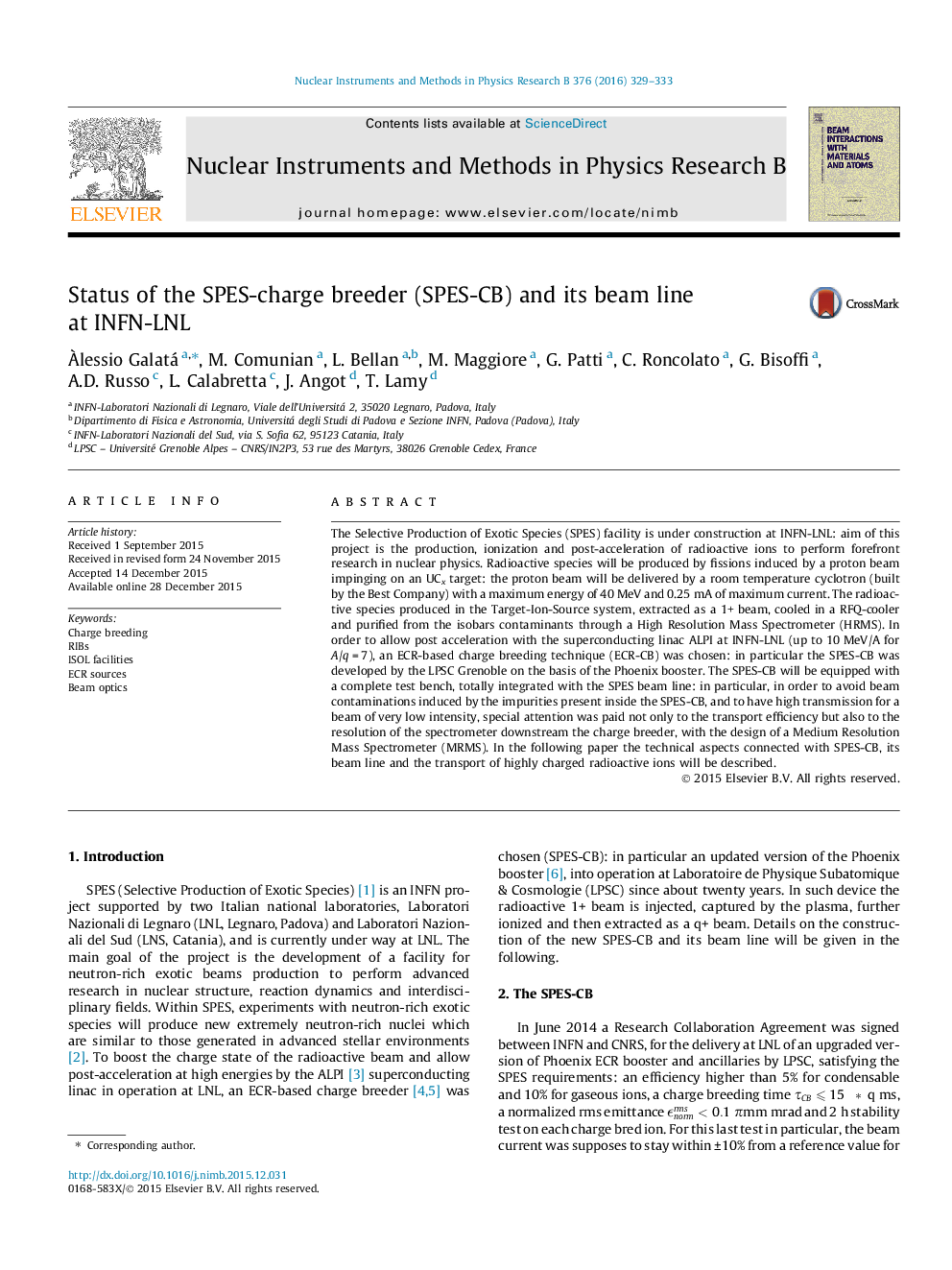| Article ID | Journal | Published Year | Pages | File Type |
|---|---|---|---|---|
| 8039851 | Nuclear Instruments and Methods in Physics Research Section B: Beam Interactions with Materials and Atoms | 2016 | 5 Pages |
Abstract
The Selective Production of Exotic Species (SPES) facility is under construction at INFN-LNL: aim of this project is the production, ionization and post-acceleration of radioactive ions to perform forefront research in nuclear physics. Radioactive species will be produced by fissions induced by a proton beam impinging on an UCx target: the proton beam will be delivered by a room temperature cyclotron (built by the Best Company) with a maximum energy of 40 MeV and 0.25 mA of maximum current. The radioactive species produced in the Target-Ion-Source system, extracted as a 1+ beam, cooled in a RFQ-cooler and purified from the isobars contaminants through a High Resolution Mass Spectrometer (HRMS). In order to allow post acceleration with the superconducting linac ALPI at INFN-LNL (up to 10 MeV/A for A/q = 7), an ECR-based charge breeding technique (ECR-CB) was chosen: in particular the SPES-CB was developed by the LPSC Grenoble on the basis of the Phoenix booster. The SPES-CB will be equipped with a complete test bench, totally integrated with the SPES beam line: in particular, in order to avoid beam contaminations induced by the impurities present inside the SPES-CB, and to have high transmission for a beam of very low intensity, special attention was paid not only to the transport efficiency but also to the resolution of the spectrometer downstream the charge breeder, with the design of a Medium Resolution Mass Spectrometer (MRMS). In the following paper the technical aspects connected with SPES-CB, its beam line and the transport of highly charged radioactive ions will be described.
Keywords
Related Topics
Physical Sciences and Engineering
Materials Science
Surfaces, Coatings and Films
Authors
Ãlessio Galatá, M. Comunian, L. Bellan, M. Maggiore, G. Patti, C. Roncolato, G. Bisoffi, A.D. Russo, L. Calabretta, J. Angot, T. Lamy,
